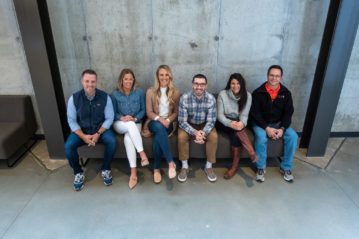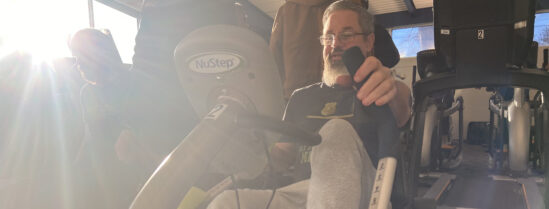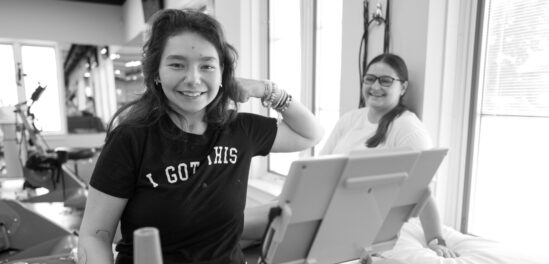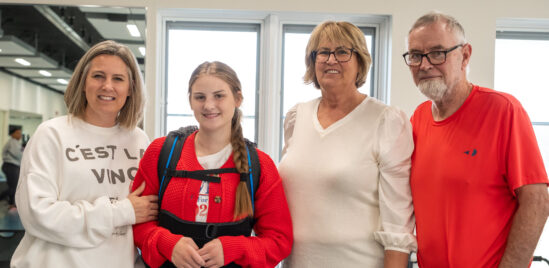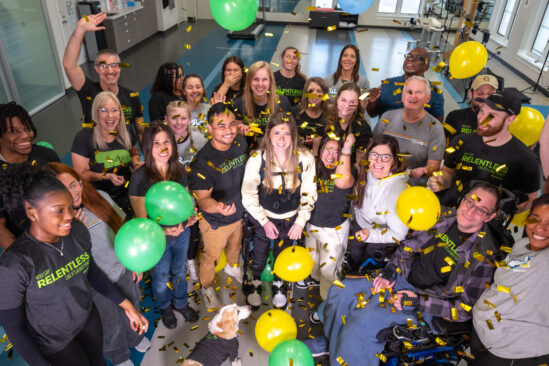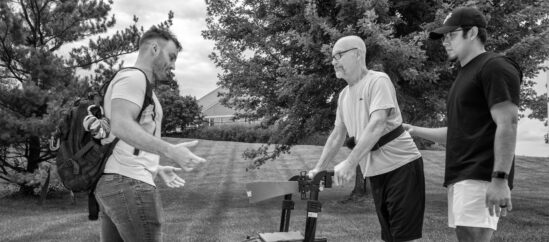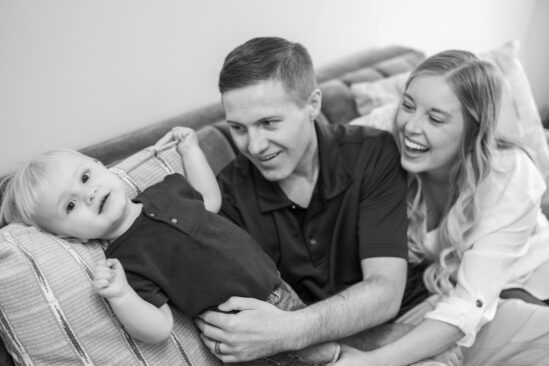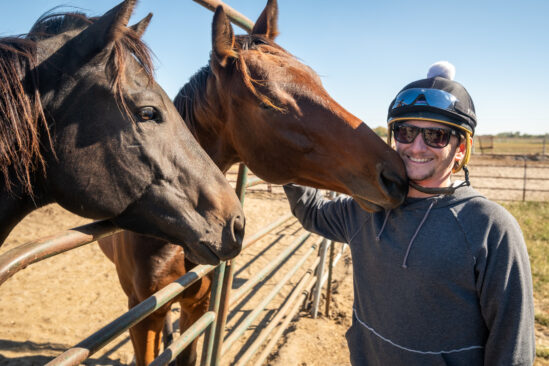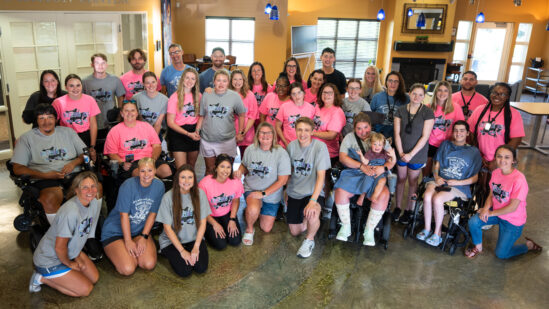Through the use of specialized video technology, QLI Telerehabilitation gives rehab clients unprecedented access to industry-leading brain and spinal cord injury expertise. For men and women returning home, to work, and to their communities, QLI Telerehabilitation is an innovative and uniquely effective platform of recovery.
To learn more about the program, we sat down with Melissa Anderson, QLI Telerehabilitation’s occupational therapist and one of the leading voices in this flourishing new evolution of intensive therapy services.
—
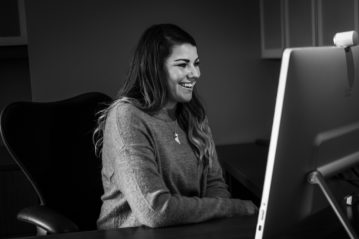 When the Telerehabilitation program was being envisioned, what was the need being met and how did the program come together?
When the Telerehabilitation program was being envisioned, what was the need being met and how did the program come together?
It comes down to QLI’s inpatient program serving individuals from across the country. When we send people home, or to an outpatient resource, we would often hear, “Well, they’d be appropriate for outpatient services if it was the right fit.”
Meaning, it’d be the right fit if the outpatient facility specialized in brain injury or spinal cord injury. That’s such a focused area that finding that kind of expertise becomes such a huge challenge.
The skills being learned in clinical spaces don’t always cleanly transition into real-world situations. Especially in terms of the learning that takes place for a person recovering from a brain injury. A person’s functional environment—literally where a person is living or working or spending their time every day—is going to be the most beneficial place to rebuild those important skills.
QLI knows what it’s doing in terms of the services it delivers for those diagnoses. So the question was: How can we deliver that same quality of care for patients in an outpatient setting? We know brain injury, we know spinal cord injury, and we know how to treat them, so how do we make that treatment as functional and real-world as possible?
Thinking about rehabilitation in a functional setting, not just in terms of functional skills, was really where the development of the Telerehabilitation program came from. It gives us the chance to be really creative outside of a typical outpatient setting.
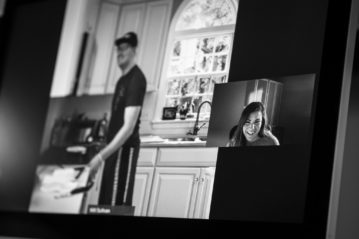 Is Telerehabilitation an option for individuals who didn’t receive inpatient care at QLI?
Is Telerehabilitation an option for individuals who didn’t receive inpatient care at QLI?
Absolutely. Clients don’t need to have been patients of QLI to participate in Telerehabilitation.
We recently worked with a client who had never stepped foot on QLI’s campus. This person suffered a work-related injury and had been discharged from a traditional outpatient clinic. The workers’ compensation provider reached out to us and said, “You know, we think this person could do more.” Yes, this person is driving, living independently, can manage those basic needs. But day to day, that’s it.
We were a great fit, and we were able to identify some high-level cognitive things we could dive into—start building real goals for their schooling, their return to work. Through those goals we could start addressing those complex cognitive needs.
Eventually, we built a program where we could work with the client to submit job applications, performing mock interviews, structuring their time relevant to their goals.
It was mutually beneficial, ultimately. This person was bored. You know, this person is at home, they’re motivated, but things aren’t happening. Additionally, their funding source is saying, “we know they can accomplish more.”
I think delivering that sense of purpose back into someone’s life is really where you see the similarity between QLI’s inpatient services and this separate Telerehabilitation program. It’s about looking at a person’s identity and life outside of what their injury is.
 What is the team that makes a comprehensive Telerehabilitation program possible?
What is the team that makes a comprehensive Telerehabilitation program possible?
I bring expertise from an occupational therapy perspective. Brad Dexter [QLI’s coordinator of physical and occupational therapy services] brings a tremendous specialization on the physical therapy side. We have an amazing speech-language pathologist. And then a team of psychologists who can identify the important pieces of a person’s life.
What’s so powerful about the combination of these pieces through teletherapy is that we’re not simulating anything. We’re literally in a person’s real situation, telecommunicating into a person’s home or workplace or in the community. Brad has hosted appointments with clients while they’re in the gym, for instance.
And we’re a tight-knit team. Lots of overlap. With that level of involvement we can cross-collaborate to build skills and target a person’s individual purpose or goals the same way QLI does with its inpatient service.
It sounds much more mobile than video conferencing in to someone’s computer.
It is! And that was definitely the vision we had from the outset. We wanted it to be more remote. Again, it’s not “let’s practice grocery shopping in a clinic.” It’s “let’s actually go to your grocery store.”
What does an average session look like?
There is no average session! [Laughs.]
It’s a really nice parallel to QLI’s inpatient program in that way. Simply, it’s individualized to the person, to their goals, to the ground they need to cover to hit those goals.
With clients for whom language is a big barrier, for instance, we try to initiate opportunities, real opportunities, where they can carry out and practice the skills they’re working on. Sometimes that might be something as straightforward as working through meal prep or cooking, clearly enunciating through the steps of a recipe
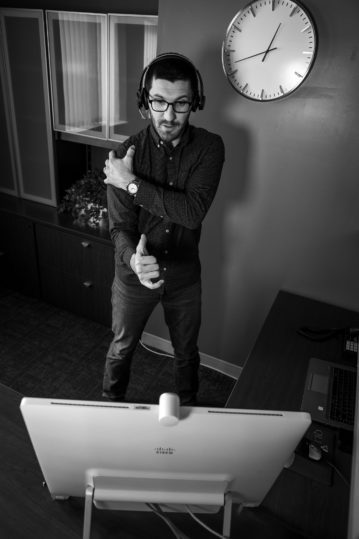 One client we have is on a path back to work. This individual is a professional in a creative field and often has lots of flexibility with their schedule. With their brain injury, it was really difficult for this person to structure their time, and they struggled to get things done. Or they’d need help when someone approached them with a specific ask and they needed to process the steps to complete the objective.
One client we have is on a path back to work. This individual is a professional in a creative field and often has lots of flexibility with their schedule. With their brain injury, it was really difficult for this person to structure their time, and they struggled to get things done. Or they’d need help when someone approached them with a specific ask and they needed to process the steps to complete the objective.
It can vary, ultimately. And that variance is just based on what that person’s life looks like. We have a level of access that wouldn’t exist for outpatient clinics or even an inpatient facility.
Is there any collaboration between the Telerehabilitation team and the rehabilitation team at QLI?
Absolutely. In particular, that’s one of the benefits for individuals on our campus now who might eventually transition to the Telerehabilitation program.
It’s so valuable to collaborate with the teams that have already been working with that client and follow through on the work that the client’s already put in. It’s crucial to maintain all the things a client has been working on and apply them as functionally as possible.
Do you feel like there are other Telerehabilitation programs providing these kinds of services for these diagnoses this comprehensively?
[A long pause.]
No.
[Laughs.]
I think more organizations will start doing more of this. This is the way of the future. Having those powerful outcomes that we’re starting to see will continue to drive teletherapy as a primary option for individuals affected by these kinds of complex injuries. Especially for these kinds of diagnoses.
What is the biggest challenge in talking about QLI’s Telerehabilitation program?
Understanding.
People commonly have the notion that Telerehabilitation means this tiny box, locked down. You know, it’s difficult to see the scope of how this service can impact a client. People ask, “How can you even provide PT or OT this way?”
It isn’t just this little tv screen or a webcam on a stationary computer. It’s active. It’s hyper-functional. Clients can use a phone or a tablet or a laptop. It means our team of experts can be involved and influential in every part of a person’s life as they transition back to what their life can be.
The message that we really want to get across is that this is very intensive therapy with the top specialists in the very specific field of treating brain and spinal cord injuries. And it just happens to take place wherever the client is.
Why does Telerehabilitation matter?
That’s a loaded question. [Laughs.] There’s a lot of pressure to answer this.
I think the answer has two parts:
The first relates to technology. This is a glimpse at how medicine—and in our particular case, rehabilitation—is evolving.
But more importantly, it’s about delivering the best services to people in their real-world settings. That comes back to the idea that each person has such unique and unpredictable life situations. And those are truly the richest moments. As therapists, we’re able to truly capture those as opportunities. It’s in opposition to having to simulate a life-like situation in a clinic. We don’t have to simulate anything. To learn a skill at the absolute highest level, a person needs to learn it in the most true-to-life situation in which that skill is applicable.
That’s what Telerehabilitation can provide.
I really feel like this gives us a chance to be an integral part of their real life. When you talk about personalized therapy, clinicians are all familiar with this concept of being “client-centered.”
Telerehabilitation gives us the best shot at being the most client-centered.
—
To learn more about QLI Telerehabilitation, visit https://www.qlitelerehab.com/
And follow the team on Instagram to see more updates as the program grows.
